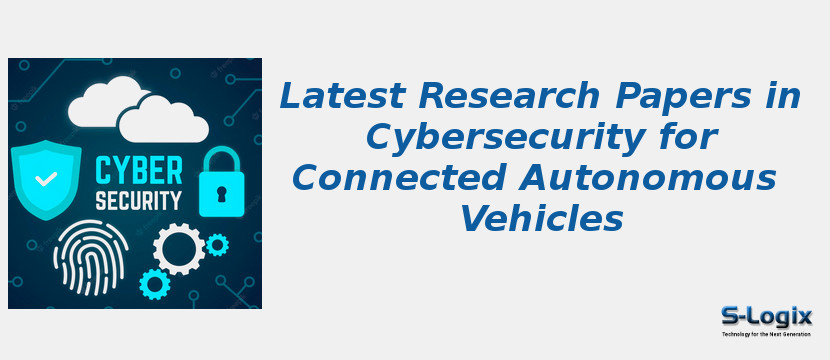
Cyber Attacks A Huge Hurdle for Self-Driving Cars
Cyber attacks become a big hurdle for the development of autonomous cars. The promise of self-driving vehicles is incredibly exciting, offering the potential for safer, more efficient, and more accessible transportation. But this futuristic vision faces a significant threat: the vulnerability of these complex systems to cyberattacks. From hacking into sensor data to manipulating control systems, the potential consequences are severe, ranging from minor malfunctions to catastrophic accidents.
This post dives deep into the cybersecurity challenges facing the autonomous vehicle industry, exploring the types of attacks, their impact on development, and the crucial security measures needed to navigate this treacherous landscape.
The interconnected nature of autonomous vehicles, relying on numerous sensors, sophisticated software, and constant communication, creates a vast attack surface. Hackers could exploit vulnerabilities in any of these components, leading to everything from minor navigation errors to complete system failures. The stakes are incredibly high, not just for the technological advancement of autonomous driving but also for the safety and security of the public.
Understanding these risks and implementing robust security measures is paramount to ensuring the safe and successful integration of self-driving cars into our society.
Types of Cyberattacks Targeting Autonomous Vehicles
The increasing reliance on autonomous vehicles (AVs) presents a growing challenge in cybersecurity. These complex systems, integrating numerous sensors, actuators, and communication networks, are vulnerable to a variety of cyberattacks, potentially leading to severe consequences. Understanding these threats is crucial for developing robust security measures and ensuring the safe deployment of AV technology. This post will delve into the various types of cyberattacks targeting autonomous vehicles, exploring their impact and potential mitigation strategies.
Categorization of Cyberattacks Against Autonomous Vehicles
The following table categorizes various cyberattacks that could compromise autonomous vehicle systems. It’s important to note that many attacks can leverage multiple attack vectors simultaneously, creating complex and challenging scenarios for security professionals.
| Manufacturer | Attack Vector | Impact | Mitigation Strategy |
|---|---|---|---|
| Any Manufacturer | Sensor Spoofing (e.g., GPS spoofing, camera injection) | Incorrect perception of the environment; accidents, lane departure, collisions. | Sensor fusion, anomaly detection, cryptographic authentication of sensor data. |
| Any Manufacturer | Actuator Manipulation (e.g., braking system compromise) | Loss of control; accidents, unintended acceleration, braking failure. | Redundant actuators, secure control systems, intrusion detection systems. |
| Any Manufacturer | Software Vulnerabilities (e.g., exploiting bugs in the vehicle’s operating system) | System crashes, data breaches, remote control takeover. | Secure coding practices, regular software updates, vulnerability scanning. |
| Any Manufacturer | Denial-of-Service (DoS) Attacks (e.g., flooding the vehicle’s communication network) | System failure, loss of connectivity, inability to operate. | Redundant communication channels, robust network architecture, traffic filtering. |
| Any Manufacturer | Data Breaches (e.g., hacking into the vehicle’s onboard computer) | Exposure of personal data, intellectual property theft, potential for future attacks. | Data encryption, access control, secure data storage. |
| Any Manufacturer | Over-the-Air (OTA) Update Attacks (e.g., compromising the update process) | Installation of malicious software, system compromise, remote control. | Secure update mechanisms, digital signatures, verification of update integrity. |
Vulnerabilities of Vehicle Components
Different components of autonomous vehicles possess unique vulnerabilities to specific attack types. For example, sensors, such as LiDAR, radar, and cameras, are susceptible to spoofing attacks, where malicious data is injected to mislead the vehicle’s perception system. Actuators, responsible for controlling vehicle functions like steering, braking, and acceleration, can be manipulated to cause unintended actions. Communication systems, including both internal networks and external communication links, are vulnerable to denial-of-service attacks and data breaches.
The consequences of these attacks can range from minor malfunctions to catastrophic accidents.
Cyberattacks are a massive roadblock for self-driving cars; the sheer volume of data these vehicles generate and their reliance on interconnected systems makes them prime targets. Securing this data is crucial, which is why understanding solutions like bitglass and the rise of cloud security posture management is becoming increasingly important. Ultimately, robust cybersecurity strategies are non-negotiable if we want to see truly safe and reliable autonomous vehicles on our roads.
Consequences of Cyberattacks on Autonomous Vehicles, Cyber attacks become a big hurdle for the development of autonomous cars
The potential consequences of successful cyberattacks against autonomous vehicles are severe. Accidents resulting from compromised sensor data or manipulated actuators could lead to injuries or fatalities. Data breaches could expose sensitive personal information, including location data, driving habits, and even biometric data. System failures caused by software vulnerabilities or denial-of-service attacks could render the vehicle inoperable, leaving passengers stranded or vulnerable.
The impact extends beyond individual vehicles; large-scale attacks could disrupt traffic flow, causing widespread chaos and economic losses. For example, a coordinated attack affecting a fleet of autonomous delivery trucks could severely impact supply chains. The reputational damage to manufacturers following a high-profile cyberattack could be significant, affecting consumer trust and sales.
Impact on Development Stages: Cyber Attacks Become A Big Hurdle For The Development Of Autonomous Cars

Cyberattacks pose a significant threat to the development of autonomous vehicles, impacting every stage from initial research to widespread deployment. The complexity of these systems, combined with their reliance on interconnected networks and software, creates numerous vulnerabilities that malicious actors can exploit. Understanding these vulnerabilities and their impact across the development lifecycle is crucial for building secure and reliable autonomous vehicles.The challenges posed by cyberattacks are multifaceted and vary depending on the stage of development.
Each phase presents unique vulnerabilities that require specific security measures to mitigate potential risks. Failing to address these challenges at each stage can lead to significant delays, increased costs, reputational damage, and, most critically, safety hazards.
Cybersecurity Challenges in Research and Development
The research and development phase focuses on algorithm development, sensor integration, and system architecture design. Cyberattacks at this stage can compromise the integrity of the core algorithms, leading to flawed designs and unpredictable behavior in the final product. For example, a malicious actor could introduce backdoors into the core software, allowing for remote manipulation of the vehicle’s functions once deployed.
Furthermore, compromised sensor data during testing could lead to the development of inaccurate or unreliable decision-making algorithms. This could result in costly delays and redesigns as developers must identify and rectify vulnerabilities introduced early in the development process.
Cybersecurity Challenges During Testing and Validation
The testing phase is crucial for identifying and rectifying vulnerabilities before deployment. However, cyberattacks can compromise the integrity of test data, leading to inaccurate assessments of the vehicle’s safety and performance. Simulated attacks, designed to mimic real-world scenarios, are essential; however, if these tests are compromised, the resulting vulnerabilities may go undetected. For instance, a sophisticated attack could manipulate sensor data during simulated driving tests, leading developers to believe the system is performing correctly when it is not.
This could have severe consequences when the vehicle is deployed in real-world conditions.
Cybersecurity Challenges in Manufacturing
During manufacturing, the focus shifts to hardware and software integration into the vehicle. Cyberattacks can target the manufacturing process itself, introducing malicious code or hardware flaws into the vehicles being produced. This could involve compromising the supply chain, introducing counterfeit components, or manipulating the software during the installation process. A compromised manufacturing process could result in a batch of vehicles with inherent vulnerabilities, requiring costly recalls and potentially endangering drivers and passengers.
Cybersecurity Challenges During Deployment and Operation
Once deployed, autonomous vehicles become vulnerable to a wide range of cyberattacks. These attacks can target the vehicle’s communication systems, onboard software, or even its physical components. For example, a denial-of-service attack could disable critical systems, rendering the vehicle inoperable. Alternatively, a remote takeover could allow a malicious actor to control the vehicle’s steering, braking, or acceleration, leading to potentially catastrophic consequences.
The impact of such attacks extends beyond the individual vehicle, potentially disrupting entire transportation systems.
Flowchart Illustrating Cyber Threats Disrupting the Development Pipeline
Imagine a flowchart starting with “Research & Development” as the first box. An arrow leads to “Testing & Validation,” then to “Manufacturing,” and finally to “Deployment & Operation.” Each box has branching arrows representing potential cyber threats. For example, from “Research & Development,” arrows branch to “Compromised Algorithms,” “Data Manipulation,” and “Backdoor Insertion.” Similarly, “Testing & Validation” branches to “Test Data Falsification,” “Vulnerability Concealment,” and “Inaccurate Assessment.” “Manufacturing” branches to “Supply Chain Compromise,” “Hardware Tampering,” and “Software Injection.” Finally, “Deployment & Operation” branches to “Denial-of-Service Attacks,” “Remote Takeover,” and “Data Theft.” These branching arrows illustrate how cyber threats can impact each stage, potentially cascading down the development pipeline.
Examples of Real-World Incidents
While specific details of cyberattacks on autonomous vehicle projects are often kept confidential for security reasons, several incidents highlight the potential for disruptions. News reports have alluded to instances where researchers have demonstrated vulnerabilities in autonomous vehicle systems, highlighting the potential for malicious actors to exploit these weaknesses. These examples, though not always publicly detailed, underscore the critical need for robust cybersecurity measures throughout the entire development lifecycle.
The lack of public reporting often stems from the sensitive nature of these incidents and the potential for misuse of the disclosed information.
Security Measures and Countermeasures
Securing autonomous vehicles against cyberattacks is paramount, demanding a multi-layered approach encompassing network, software, and hardware defenses. A robust security strategy is crucial not only for preventing accidents but also for maintaining public trust and ensuring the widespread adoption of this transformative technology. The following sections detail the essential security measures and technologies involved.
Security Measures for Autonomous Vehicles
Implementing effective security measures requires a holistic strategy addressing various attack vectors. A layered approach, combining preventative and detective controls, is crucial for mitigating risks across the entire vehicle ecosystem.
- Secure Boot Process: Ensuring that only authorized software loads during the vehicle’s startup, preventing malicious code from executing at the initial stage. This involves cryptographic verification of each software component.
- Intrusion Detection and Prevention Systems (IDPS): Real-time monitoring of vehicle systems for anomalous activity. IDPS can detect unauthorized access attempts, malware infections, and unusual communication patterns, triggering alerts or automatically blocking malicious actions.
- Data Encryption: Protecting sensitive data both in transit and at rest using strong encryption algorithms. This includes securing communication between vehicle components, as well as encrypting data stored on onboard systems.
- Secure Software Development Practices: Employing secure coding techniques to minimize vulnerabilities in the vehicle’s software. This includes regular security audits, penetration testing, and the use of static and dynamic analysis tools.
- Regular Software Updates and Patches: Promptly addressing identified vulnerabilities through timely software updates and patches. A robust update mechanism is essential to maintain the vehicle’s security posture.
- Hardware Security Modules (HSMs): Dedicated hardware components for securely storing cryptographic keys and performing cryptographic operations. HSMs protect sensitive data from unauthorized access, even if the vehicle’s software is compromised.
- Network Segmentation: Isolating different vehicle systems to limit the impact of a successful attack. If one system is compromised, the attacker’s access is restricted to that specific segment.
- Firewall Protection: Controlling network traffic to and from the vehicle, blocking unauthorized access attempts. Firewalls can be implemented at both the network and application layers.
- Authentication and Authorization: Verifying the identity of users and devices accessing the vehicle’s systems, and controlling their access privileges. Multi-factor authentication can enhance security.
- Physical Security Measures: Protecting the vehicle from physical tampering and unauthorized access to its hardware components. This includes secure housing for sensitive components and tamper-evident seals.
Comparison of Cybersecurity Technologies
Several key cybersecurity technologies are employed in autonomous vehicles, each with its strengths and limitations.
- Intrusion Detection Systems (IDS): IDS passively monitors network traffic and system activity for suspicious patterns. While effective at detecting attacks, they don’t actively prevent them. An example would be an IDS detecting unusual CAN bus activity indicating a potential attempt to manipulate steering.
- Intrusion Prevention Systems (IPS): IPS actively blocks malicious traffic or actions based on predefined rules or signatures. An example would be an IPS blocking an attempt to access a critical system through an unauthorized port.
- Encryption: Encryption protects data confidentiality by transforming it into an unreadable format. It’s crucial for securing communication between vehicle components and external systems, as well as for protecting sensitive data stored onboard. Advanced Encryption Standard (AES) is a commonly used encryption algorithm.
- Secure Coding Practices: Secure coding minimizes vulnerabilities in the software by following best practices to prevent buffer overflows, SQL injection, and other common attacks. This involves rigorous code reviews, static and dynamic analysis, and secure development lifecycle methodologies.
Layered Security Architecture
A layered security architecture provides a defense-in-depth approach, ensuring that even if one layer is compromised, others remain intact.
- Network Layer: This layer focuses on securing communication between the vehicle and external systems, as well as between different vehicle components. Technologies like firewalls, intrusion detection/prevention systems, and encryption are employed at this layer.
- Software Layer: This layer focuses on securing the vehicle’s software, including the operating system, applications, and control algorithms. Secure coding practices, regular software updates, and intrusion detection systems are essential here. The interaction between layers involves the software layer relying on the network layer for secure communication and the hardware layer for secure execution.
- Hardware Layer: This layer focuses on securing the vehicle’s physical components, including sensors, actuators, and processors. Hardware security modules (HSMs), tamper-resistant hardware, and secure boot processes are critical elements of this layer. The hardware layer provides a foundation for the software and network layers, ensuring their integrity and security.
The interaction between these layers is crucial. For instance, the network layer relies on the hardware layer for secure communication channels, while the software layer depends on both the hardware and network layers for secure execution and data access. A breach in one layer can compromise the others, emphasizing the importance of a comprehensive, layered approach.
Legal and Ethical Implications
The increasing autonomy of vehicles introduces complex legal and ethical dilemmas, particularly when considering the potential for cyberattacks. The very nature of these attacks, often leaving no clear perpetrator or easily identifiable cause, throws existing legal frameworks into disarray. Determining liability and ensuring accountability in the aftermath of a cyberattack-induced accident becomes a significant hurdle. The potential for misuse of autonomous vehicle technology further complicates the landscape, demanding proactive measures to mitigate risks and establish clear guidelines.The ambiguity surrounding liability in autonomous vehicle accidents involving cyberattacks presents a major challenge.
Current legal systems largely rely on assigning fault to a specific individual or entity. However, a successful cyberattack might exploit vulnerabilities in the vehicle’s software, the network infrastructure, or even cloud-based services, making it difficult to pinpoint the responsible party. Is it the manufacturer for design flaws? The software developer for coding errors? The hacker who initiated the attack?
Or the owner for failing to update the vehicle’s security software? The answer is rarely straightforward, leading to protracted legal battles and potentially leaving victims without recourse.
Liability and Accountability in Cyberattacks
Establishing clear lines of liability is crucial for deterring malicious actors and providing compensation to victims. Several approaches are being explored, including a shift towards a more product liability model, where manufacturers bear greater responsibility for the safety of their autonomous vehicles regardless of the precise cause of failure. However, this also necessitates rigorous testing and robust security measures from the outset.
Another approach focuses on a layered responsibility model, where different actors along the supply chain share liability based on their contribution to the overall system’s security. This would require extensive collaboration and clear contractual agreements defining responsibilities. Ultimately, a comprehensive legal framework is needed that addresses the unique challenges posed by cyberattacks, while also ensuring fairness and efficiency in resolving disputes.
Potential for Misuse of Autonomous Vehicle Technology
Autonomous vehicles, while offering significant safety and efficiency improvements, are not immune to malicious exploitation. The potential for misuse ranges from relatively minor inconveniences, such as remotely disabling a vehicle’s functions, to life-threatening scenarios, such as remotely taking control of the vehicle and causing an accident. Consider a scenario where a fleet of autonomous delivery vehicles is compromised, allowing a malicious actor to reroute them to a different location, potentially causing disruption or even theft.
Similarly, a compromised autonomous public transport vehicle could be used to cause harm to passengers or pedestrians. These scenarios highlight the need for robust security measures and effective countermeasures to prevent such malicious activities.
Government Regulations and Industry Standards
Government regulations and industry standards play a critical role in addressing the legal and ethical challenges associated with cyberattacks on autonomous vehicles. International cooperation is essential to establish consistent standards for vehicle security, data protection, and incident response. Regulations should mandate robust security testing and certification processes for autonomous vehicle systems, including regular security updates and vulnerability assessments.
Moreover, clear guidelines are needed for data sharing and incident reporting, ensuring transparency and facilitating effective investigation and remediation efforts. Industry standards can complement government regulations by providing detailed technical specifications and best practices for secure design and development. Collaboration between governments, industry stakeholders, and cybersecurity experts is crucial for developing a comprehensive and effective regulatory framework.
Future Trends and Predictions
The cybersecurity landscape for autonomous vehicles is rapidly evolving, and predicting the future requires considering both the increasing sophistication of attacks and the advancements in defensive technologies. Over the next 5-10 years, we can expect a significant shift in the types and scale of cyber threats, demanding equally significant advancements in security measures. The race between attackers and defenders will continue to intensify, pushing the boundaries of innovation on both sides.The nature of cyberattacks targeting autonomous vehicles will become increasingly complex and insidious.
We’re moving beyond simple denial-of-service attacks to more targeted, sophisticated intrusions aimed at manipulating vehicle systems for malicious purposes. This includes exploiting vulnerabilities in the vehicle’s software, communication protocols, and even its sensors to cause accidents, theft, or data breaches. The rise of AI-powered attacks, capable of learning and adapting to defensive measures, poses a particularly significant challenge.
These attacks will be harder to detect and prevent, necessitating a move towards more adaptive and proactive security solutions.
Evolving Cyberattack Techniques and the Need for Adaptive Security
The increasing reliance on interconnected systems and cloud-based services for autonomous vehicles creates a larger attack surface. Future attacks might involve coordinated assaults across multiple vectors, exploiting vulnerabilities in the vehicle itself, its communication network with infrastructure (V2X), and the cloud platforms managing data and updates. For example, a sophisticated attack might involve simultaneously disrupting GPS signals, injecting false sensor data, and exploiting a software vulnerability to gain control of the vehicle’s braking system.
Self-driving cars face a massive challenge: cyberattacks. The complexity of their systems makes them vulnerable, and securing them requires robust, adaptable software. This is where the advancements discussed in this article on domino app dev the low code and pro code future become incredibly relevant; faster development cycles could help patch vulnerabilities more quickly.
Ultimately, however, the race to secure autonomous vehicles against cyber threats is far from over.
To counter this, adaptive security solutions are crucial. These systems utilize machine learning and artificial intelligence to identify and respond to evolving threats in real-time, learning from past attacks to improve future defenses. This includes constantly updating security protocols and software patches based on threat intelligence and continuous monitoring of vehicle systems for anomalies.
Technological Advancements Enhancing Cybersecurity
Several technological advancements hold promise for enhancing the cybersecurity of autonomous vehicles. One key area is the development of more secure communication protocols, such as quantum-resistant cryptography, which can withstand attacks from even the most powerful quantum computers. Another is the integration of advanced intrusion detection and prevention systems, utilizing AI and machine learning to analyze vehicle data in real-time and detect anomalous behavior indicative of a cyberattack.
Furthermore, blockchain technology can enhance the security and integrity of data exchange between vehicles and infrastructure, ensuring the authenticity and trustworthiness of information. For example, imagine a blockchain-based system verifying the integrity of sensor data before it’s used by the autonomous driving system, reducing the risk of manipulation by malicious actors. Finally, the development of hardware-based security solutions, such as secure enclaves and tamper-proof hardware components, will be crucial in protecting critical vehicle systems from physical attacks and unauthorized access.
Case Studies
While theoretical vulnerabilities are concerning, real-world incidents paint a clearer picture of the challenges in securing autonomous vehicles. Examining high-profile cyberattacks provides crucial insights into the types of threats, their impact, and the lessons learned for future development and security strategies. These case studies highlight the urgent need for robust security measures across the entire lifecycle of autonomous vehicle systems.
Compromised Jeep Cherokee (2015)
The 2015 Jeep Cherokee hack, conducted by researchers Charlie Miller and Chris Valasek, demonstrated a startling vulnerability in connected car systems. They remotely accessed and controlled a Jeep Cherokee’s critical functions, including steering, braking, and acceleration, via the vehicle’s infotainment system. This exploit utilized vulnerabilities in the Uconnect system, demonstrating that a seemingly innocuous feature could become a pathway for malicious control. The attack highlighted the potential for remote takeover of essential vehicle functions, showcasing the severity of software vulnerabilities in connected cars. The impact was significant, leading to a recall of affected vehicles and prompting a heightened awareness of the cybersecurity risks associated with connected car technologies. The outcome was the implementation of improved security measures by Fiat Chrysler Automobiles, but the incident served as a wake-up call for the entire automotive industry.
Tesla Autopilot Data Breach (2023)
In 2023, a data breach affecting Tesla vehicles utilizing the Autopilot system became public. While details remained somewhat limited due to ongoing investigations, reports suggested that hackers gained unauthorized access to data collected by the Autopilot system. This data, which included sensor information, vehicle location, and driving behavior, potentially compromised user privacy and could have been used for malicious purposes, such as tracking vehicle movements or creating sophisticated attack vectors. The method of the breach remained undisclosed in official statements. The impact of this incident was a serious erosion of user trust and raised concerns about the security of data collected by autonomous vehicle systems. The outcome involved Tesla’s commitment to enhance its data security protocols, but the long-term effects of the breach on user trust and the company’s reputation remain to be seen.
Simulated Attack on a Self-Driving Truck (2018)
Researchers from the University of California, Berkeley, conducted a simulated attack on a self-driving truck in 2018. They demonstrated the possibility of manipulating sensor data using a relatively simple adversarial attack. By subtly altering the data fed to the truck’s perception system, they were able to cause the truck to misinterpret its surroundings, leading to unintended behaviors such as swerving or braking unexpectedly. This attack highlighted the vulnerability of autonomous vehicles to sensor manipulation and the potential for sophisticated attacks to cause serious accidents. The method involved the use of adversarial machine learning techniques to generate subtle but impactful alterations to sensor inputs. The impact underscored the need for robust sensor fusion and anomaly detection mechanisms in autonomous driving systems. The outcome was a deeper understanding of the vulnerabilities of AI-based perception systems and the need for more resilient and secure algorithms.
Ultimate Conclusion

The journey towards fully autonomous vehicles is undeniably exciting, but the looming threat of cyberattacks cannot be ignored. The development and deployment of self-driving cars require a multifaceted approach to security, incorporating robust hardware, software, and network defenses. Collaboration between manufacturers, researchers, and policymakers is essential to establish industry standards and regulations that prioritize safety and resilience against evolving cyber threats.
Only through a concerted effort to address these vulnerabilities can we unlock the true potential of autonomous vehicles while mitigating the significant risks they pose.
Essential Questionnaire
What are the most common types of cyberattacks against autonomous vehicles?
Common attacks include spoofing sensor data (e.g., making a car “see” obstacles that aren’t there), injecting malicious code into the vehicle’s software, and disrupting communication between the car and its infrastructure.
How can insurance companies deal with the liability issues surrounding autonomous vehicle cyberattacks?
Insurance companies are grappling with this; likely solutions include specialized cyber insurance policies, detailed risk assessments, and potentially shared liability models between manufacturers and drivers.
Are there international standards being developed to address autonomous vehicle cybersecurity?
Yes, various international organizations and governments are collaborating to develop standards and regulations to improve cybersecurity for autonomous vehicles, but a universally accepted standard is still evolving.
What role does ethical hacking play in securing autonomous vehicles?
Ethical hackers play a crucial role in identifying vulnerabilities before malicious actors can exploit them. They perform penetration testing and vulnerability assessments to strengthen the security of autonomous vehicle systems.





